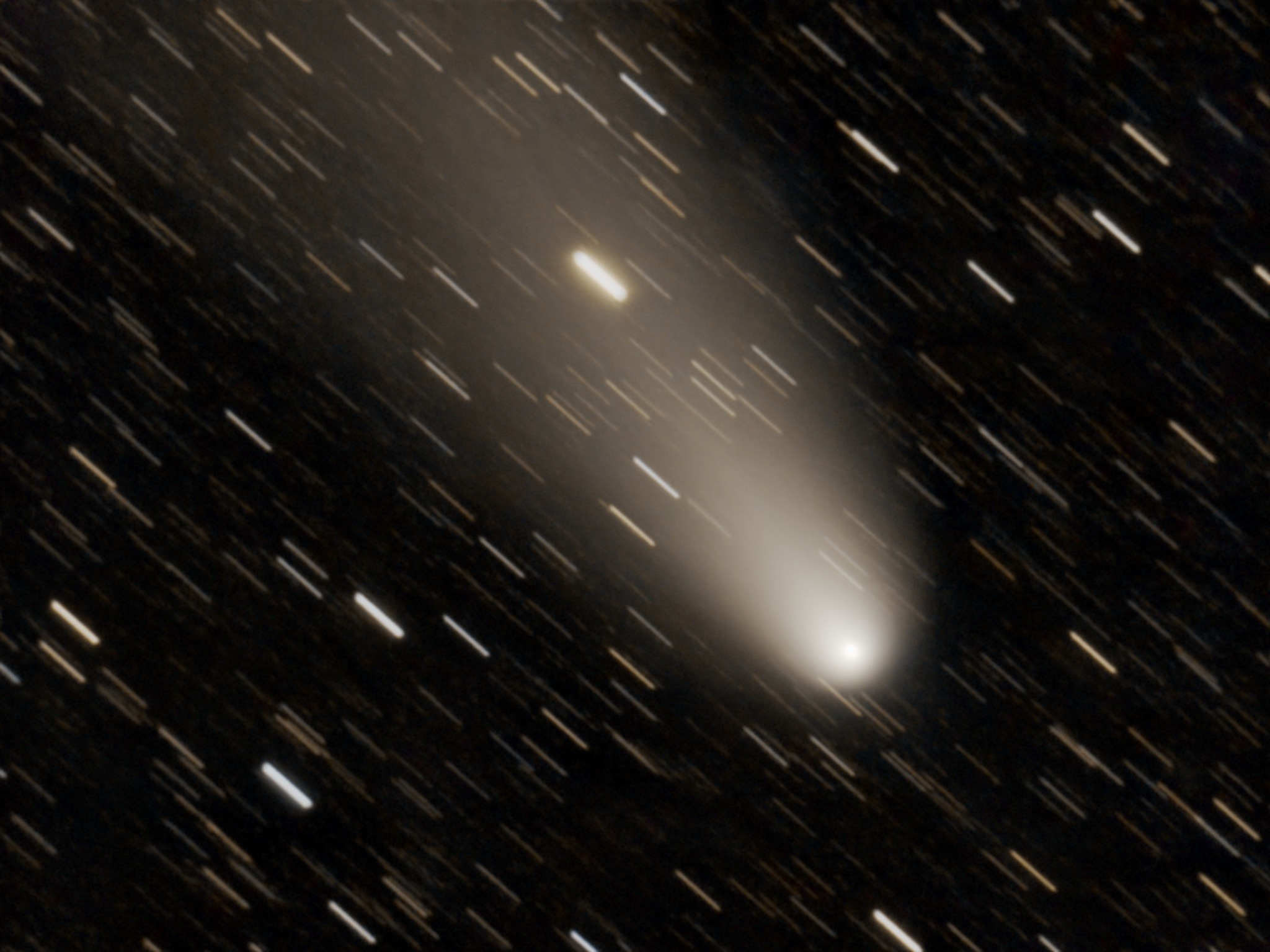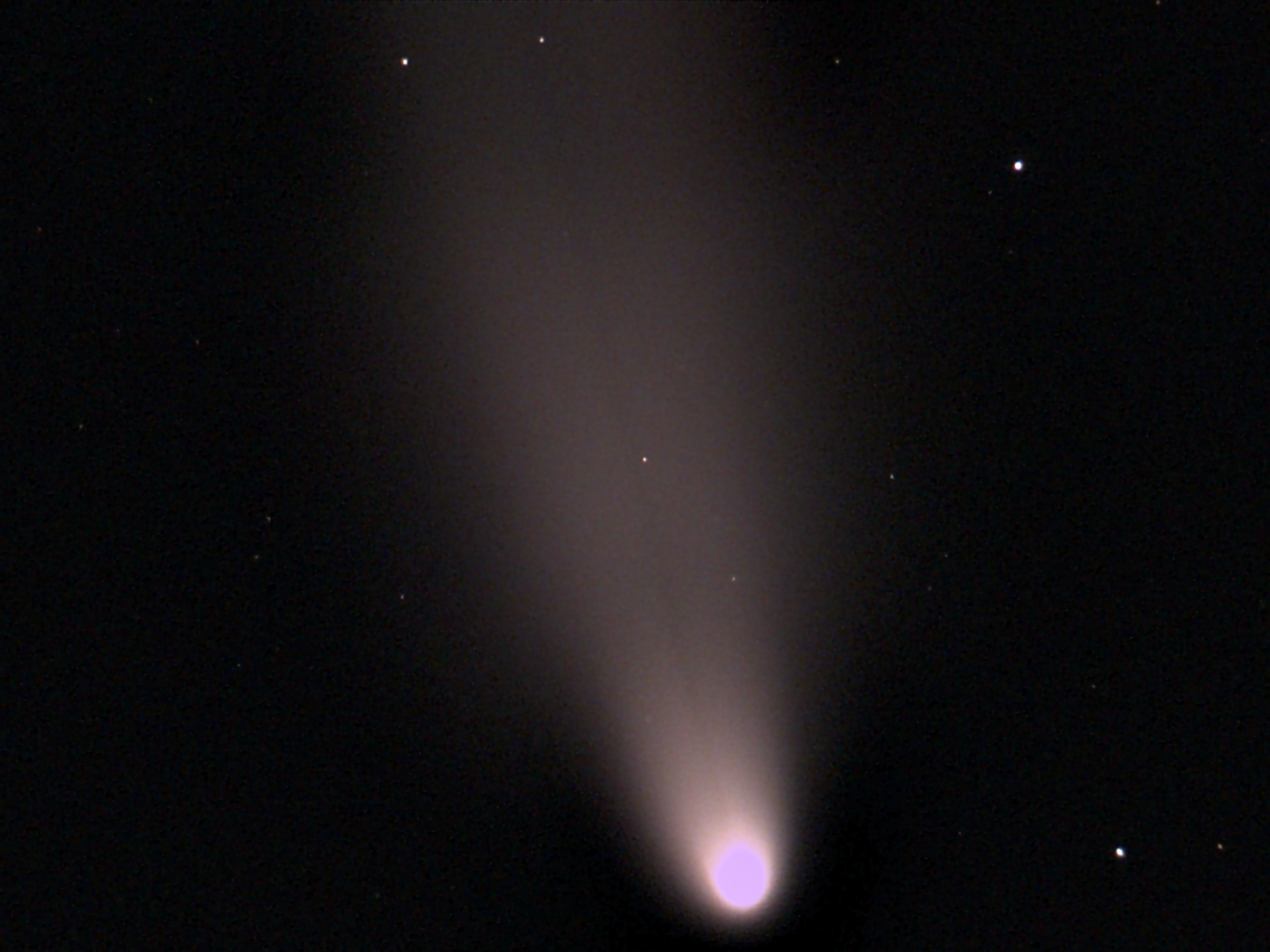
These past couple months, observers across the world observed Comet C/2023 A3 (Tsuchinan-Atlas) as it flew by our planet. This icy visitor from the distant Oort Cloud, was just discovered last year and had the world wondering if it would become naked-eye in 2024 as it was warmed by the Sun. And it did not disappoint!
Comet A3 made its close approach to the Sun – called perihelion – on September 27, where it passed less than half an Earth-Sun distance by our star. Around this time the comet was an early morning object and became so incredibly bright that it was hard to observe through Unistellar telescopes. Just a couple of weeks later on October 12, it reached its closest approach to Earth — called perigee. Because the comet survived its passage by the Sun, it is still visible to observers in the Northern Hemisphere as it moves away from our planet, so catch it while you can! It won’t be visiting again for another 80,000 years.

Brighter than Expected
Citizen Astronomers with the Unistellar & SETI Institute Network have been watching Comet A3 since mid 2023 to help astronomers track and predict its activity. Cometary Activity program lead Dr. Ariel Graykowski used their data to create models which suggested Comet A3 would shine as brightly as the North Star when it approached. But it did much more than that! At its most luminous, Comet A3 reached a magnitude of -5… that’s over 600 times brighter than the North Star, Polaris, and 25 times brighter than the brightest star in the sky, Sirius!
“A3 was an exciting comet for me!” says Graykowski. “The fate of the comet was highly debated amongst astronomers from potential disintegration to an amazing naked eye comet enhanced by forward scattering. We got the amazing option! This is the brightest comet I’ve ever seen myself, so it was really special.”
Forward scattering is the phenomenon responsible for Comet A3 appearing so prominently in our skies. When this phenomenon occurs, sunlight that comes from behind the comet (from our viewpoint) scatters off of dust particles in the coma and toward us, causing significant enhancement! Comet A3’s proximity, forward scattering, and survival worked together to create the perfect opportunity for observers to catch it in its full glory.

A Naked-Eye Comet Contest
From Comet A3’s perihelion through the end of October, comet watchers worldwide participated in the SETI Institute and Unistellar Comet A3 Contest! They submitted their images on social media as entries into the contest for a chance to win swag, a Unistellar Solar Filter, and a ticket to the SETI Institute’s 40th Anniversary Celebration.
Congratulations to Scott K. (US) and Thierry G. (France)! Although the two winners were randomly selected, everyone’s images were dazzling. Some observers witnessed an even more rare sight than a naked-eye comet alone – Comet A3’s anti-tail. The anti-tail of a comet is a unique, short-lived tail that actually points toward the Sun, unlike the main tail, which points away. This happens because of the distribution and orbit of larger dust particles left behind by the comet, which align in a way that creates a “forward-facing” tail when seen from Earth at certain times.
Other observers may not have spotted the anti-tail, but they did see the shadow of the comet’s nucleus cast upon its tail! By mid October, the comet’s main tail stretched approximately 20 degrees across the sky – that’s the span of 40 moons stacked side by side!
Luckily, Comet A3’s cosmic showcase is not over, although some of these more unusual features are beginning to fade. Be sure to look up before it’s gone for good!


Observe Comet A3 with your Unistellar Telescope
You can still see Comet A3 if you’re in the Northern half of the globe! This comet is in the Unistellar App Catalog, so it is easy to observe.
To make a Science observation, visit the Comets Tutorial Page and follow the Observation section instructions for 1A: The target is in the Unistellar app’s database.
In the Recording field be sure the following information is entered:
Record duration : 20min
Exposure time : 3971ms
Gain : 25db
When you are done, don’t forget to submit a Comet Observation Report. Happy Comet Watching!
This blog post was originally published at science.unistellar.com.





